Planning worship?
Check out our sister site, ZeteoSearch.org,
for 20+ additional resources related to your search.
- |
User Links
Person Results
Anonymous
Person Name: Unknown Author (vs. 1-4) of "Alleluia (x8)" in Complete Anglican Hymns Old and New In some hymnals, the editors noted that a hymn's author is unknown to them, and so this artificial "person" entry is used to reflect that fact. Obviously, the hymns attributed to "Author Unknown" "Unknown" or "Anonymous" could have been written by many people over a span of many centuries.
Anonymous
Gregory Murray
1905 - 1992 Person Name: A. Gregory Murray, OSB Composer of "[Alleluia, alleluia, alleluia]" in Worship (3rd ed.)
Gregory Murray
Betty Pulkingham
1928 - 2019 Person Name: Betty C. Pulkingham Arranger of "[Alleluia, alleluia, alleluia, alleluia]" in Worship (3rd ed.) Betty Carr Pulkingham was born in 1928 in Burlington, North Carolina. She received a B.S. in Music in 1949 from the University of North Carolina, Greensboro and she did graduate studies at the Eastman School of Music. She was Instructor of Music Theory at the University of Texas. In 1951, she married a seminarian Graham Pulkingham. They ministered together in various places in the U.S., England and Scotland; they were founding members of the Community of Celebration, an Anglican religious order. She travelled widely with "The Fisherfolk," an outreach music ministry connected with the Community of Celebration. Betty Pulkingham was a well known composer and arranger. She co-edited and published a number of songbooks and books on worship; and served on the Episcopal Church's Standing Commission on Church Music from 1988-1994. She and her husband returned to Burlington and then she later moved to Austin, Texas to live with family. She died in Austin, May 9, 2019 at the age of 90.
Dianne Shapiro, from Obituary (https://www.richandthompson.com/tributes/Betty-Pulkingham) (accessed 6-21-2019)
Betty Pulkingham
Melchior Vulpius
1570 - 1615 Composer of "GELOBT SEI GOTT" in RitualSong (2nd ed.) Born into a poor family named Fuchs, Melchior Vulpius (b. Wasungen, Henneberg, Germany, c. 1570; d. Weimar, Germany, 1615) had only limited educational opportunities and did not attend the university. He taught Latin in the school in Schleusingen, where he Latinized his surname, and from 1596 until his death served as a Lutheran cantor and teacher in Weimar. A distinguished composer, Vulpius wrote a St. Matthew Passion (1613), nearly two hundred motets in German and Latin, and over four hundred hymn tunes, many of which became popular in Lutheran churches, and some of which introduced the lively Italian balletto rhythms into the German hymn tunes. His music was published in Cantiones Sacrae (1602, 1604), Kirchengesangund Geistliche Lieder (1604, enlarged as Ein schon geistlich Gesanglmch, 1609), and posthumously in Cantionale Sacrum (1646).
Bert Polman
Melchior Vulpius
Jacques Berthier

1923 - 1994 Composer of "[Alleluia, alleluia, alleluia]" in The New Century Hymnal Jacques Berthier (b. Auxerre, Burgundy, June 27, 1923; d. June 27, 1994) A son of musical parents, Berthier studied music at the Ecole Cesar Franck in Paris. From 1961 until his death he served as organist at St. Ignace Church, Paris. Although his published works include numerous compositions for organ, voice, and instruments, Berthier is best known as the composer of service music for the Taizé community near Cluny, Burgundy. Influenced by the French liturgist and church musician Joseph Gelineau, Berthier began writing songs for equal voices in 1955 for the services of the then nascent community of twenty brothers at Taizé. As the Taizé community grew, Berthier continued to compose most of the mini-hymns, canons, and various associated instrumental arrangements, which are now universally known as the Taizé repertoire. In the past two decades this repertoire has become widely used in North American church music in both Roman Catholic and Protestant traditions.
Bert Polman
Jacques Berthier
Sir Ernest MacMillan

1893 - 1973 Person Name: Ernest Campbell MacMillan Arranger of "[Hallelujah, Hallelujah, Hallelujah!]" in Voices United Ernest MacMillan (Conductor)
Born: August 18, 1893 - Mimico, Canada
Died: May 6, 1973 - Toronto, Canada
The eminent Canadian conductor and composer, Sir Ernest (Alexander Campbell) MacMillan, began his organ studies with Arthur Blakeley in Toronto at age 8, making his public debut at 10. He continued his organ studies with A. Hollins in Edinburgh from 1905 to 1908, where he was also admitted to the classes of F. Niecks and W.B. Ross at the University.
Ernest MacMillan was made an associate (1907) and a fellow (1911) of London’s Royal College of Organists, and in 1911 received the extramural Bachelor of Music degree from the University of Oxford. He studied modern history at the University of Toronto from 1911 to 1914, before receiving piano instruction from Therese Chaigneau in Paris in 1914. In 1914 he attended the Bayreuth Festival, only to be interned as an enemy alien at the outbreak of World War I. While being held at the Ruhleben camp near Berlin, he gained experience as a conductor. He was awarded the B.A. degree in absentia by the University of Toronto in 1915. His ode, England, submitted through the Prisoners of War Education Committee to the University of Oxford, won him his Doctor of Music degree in 1918.
After his release, Ernest MacMillan returned to Toronto as organist and choirmaster of Timothy Eaton Memorial Church from 1919 to 1925. In 1920 he joined the staff of the Canadian Academy of Music, and remained with it when it became the Toronto Conservatory of Music, serving from 1926 to 1942 as its principal. He was also dean of music faculty at the University of Toronto from 1927 to 1952.
Ernest MacMillan was conductor of the Toronto Symphony Orchestra from 1931 to 1956, and of the Mendelssohn Choir there from 1942 to 1957. He also appeared as guest conductor in North and South America, Europe, and Australia. He served as president of the Canadian Music Council from 1947 to 1966, and of the Canadian Music Centre from 1959 to 1970. In 1935 he was the first Canadian musician to be knighted, an honour conferred upon him by King George V. He also received honorary doctorates from Canadian and USA institutions. He conducted many works new to his homeland, both traditional and contemporary.
--www.bach-cantatas.com/
Sir Ernest MacMillan
William Henry Monk

1823 - 1889 Person Name: William Henry Monk (1823-1889) Adapter of "VICTORY" in Common Praise (1998) William H. Monk (b. Brompton, London, England, 1823; d. London, 1889) is best known for his music editing of Hymns Ancient and Modern (1861, 1868; 1875, and 1889 editions). He also adapted music from plainsong and added accompaniments for Introits for Use Throughout the Year, a book issued with that famous hymnal. Beginning in his teenage years, Monk held a number of musical positions. He became choirmaster at King's College in London in 1847 and was organist and choirmaster at St. Matthias, Stoke Newington, from 1852 to 1889, where he was influenced by the Oxford Movement. At St. Matthias, Monk also began daily choral services with the choir leading the congregation in music chosen according to the church year, including psalms chanted to plainsong. He composed over fifty hymn tunes and edited The Scottish Hymnal (1872 edition) and Wordsworth's Hymns for the Holy Year (1862) as well as the periodical Parish Choir (1840-1851).
Bert Polman
William Henry Monk
Christopher Walker
b. 1947 Person Name: Christopher Walker Composer of "[Alleluia, alleluia. Alleluia, alleluia]" in We Celebrate
Christopher Walker
Communauté de Taizé
Person Name: Taizé Community Composer of "[Alleluia, alleluia, alleluia]" in Worship (3rd ed.)
Communauté de Taizé
Richard Proulx
1937 - 2010 Arranger of "[Alleluia, alleluia, alleluia]" in RitualSong Richard Proulx (b. St. Paul, MN, April 3, 1937; d. Chicago, IL, February 18, 2010). A composer, conductor, and teacher, Proulx was director of music at the Holy Name Cathedral in Chicago, Illinois (1980-1997); before that he was organist and choirmaster at St. Thomas' Episcopal Church in Seattle, Washington. He contributed his expertise to the Roman Catholic Worship III (1986), The Episcopal Hymnal 1982, The United Methodist Hymnal (1989), and the ecumenical A New Hymnal for Colleges and Schools (1992). He was educated at the University of Minnesota, MacPhail College of Music in Minneapolis, Minnesota, St. John's Abbey in Collegeville, Minnesota, and the Royal School of Church Music in England. He composed more than 250 works.
Bert Polman
Richard Proulx
John L. Bell
b. 1949 Person Name: John L. Bell, b. 1949 Arranger of "[Halle, halle, hallelujah]" in One Lord, One Faith, One Baptism John Bell (b. 1949) was born in the Scottish town of Kilmarnock in Ayrshire, intending to be a music teacher when he felt the call to the ministry. But in frustration with his classes, he did volunteer work in a deprived neighborhood in London for a time and also served for two years as an associate pastor at the English Reformed Church in Amsterdam. After graduating he worked for five years as a youth pastor for the Church of Scotland, serving a large region that included about 500 churches. He then took a similar position with the Iona Community, and with his colleague Graham Maule, began to broaden the youth ministry to focus on renewal of the church’s worship. His approach soon turned to composing songs within the identifiable traditions of hymnody that began to address concerns missing from the current Scottish hymnal:
"I discovered that seldom did our hymns represent the plight of poor people to God. There was nothing that dealt with unemployment, nothing that dealt with living in a multicultural society and feeling disenfranchised. There was nothing about child abuse…,that reflected concern for the developing world, nothing that helped see ourselves as brothers and sisters to those who are suffering from poverty or persecution." [from an interview in Reformed Worship (March 1993)]
That concern not only led to writing many songs, but increasingly to introducing them internationally in many conferences, while also gathering songs from around the world. He was convener for the fourth edition of the Church of Scotland’s Church Hymnary (2005), a very different collection from the previous 1973 edition. His books, The Singing Thing and The Singing Thing Too, as well as the many collections of songs and worship resources produced by John Bell—some together with other members of the Iona Community’s “Wild Goose Resource Group,” —are available in North America from GIA Publications.
Emily Brink
John L. Bell
Ralph Vaughan Williams

1872 - 1958 Composer of "[Halellujah! Hallelujah!]" in Voices United Through his composing, conducting, collecting, editing, and teaching, Ralph Vaughan Williams (b. Down Ampney, Gloucestershire, England, October 12, 1872; d. Westminster, London, England, August 26, 1958) became the chief figure in the realm of English music and church music in the first half of the twentieth century. His education included instruction at the Royal College of Music in London and Trinity College, Cambridge, as well as additional studies in Berlin and Paris. During World War I he served in the army medical corps in France. Vaughan Williams taught music at the Royal College of Music (1920-1940), conducted the Bach Choir in London (1920-1927), and directed the Leith Hill Music Festival in Dorking (1905-1953). A major influence in his life was the English folk song. A knowledgeable collector of folk songs, he was also a member of the Folksong Society and a supporter of the English Folk Dance Society. Vaughan Williams wrote various articles and books, including National Music (1935), and composed numerous arrangements of folk songs; many of his compositions show the impact of folk rhythms and melodic modes. His original compositions cover nearly all musical genres, from orchestral symphonies and concertos to choral works, from songs to operas, and from chamber music to music for films. Vaughan Williams's church music includes anthems; choral-orchestral works, such as Magnificat (1932), Dona Nobis Pacem (1936), and Hodie (1953); and hymn tune settings for organ. But most important to the history of hymnody, he was music editor of the most influential British hymnal at the beginning of the twentieth century, The English Hymnal (1906), and coeditor (with Martin Shaw) of Songs of Praise (1925, 1931) and the Oxford Book of Carols (1928).
Bert Polman
Ralph Vaughan Williams
Francis Pott
1832 - 1909 Person Name: Francis Pott, 1532-1909 Author of "Alleluia!" in The Abingdon Song Book Francis Pott studied at Brasenose College, Oxford, where he graduated B.A. in 1854, and M.A. in 1857. He was ordained Deacon in 1856, and Priest in 1857. He was Curate of Bishopsworth, Bristol, 1856; of Ardingley, Sussex, 1858; was appointed to Ticehurst in 1861; and is now incumbent of Northill, Bedfordshire. Mr. Pott has made many acceptable translations, and has edited "Hymns Fitted to the Order of Common Prayer, etc.;" a compilation of real merit.
--Annotations of the Hymnal, Charles Hutchins, M.A., 1872
============
Pott, Francis, M.A., was born Dec. 29, 1832, and educated at Brasenose, College, Oxford, B.A. 1854; M.A. 1857. Taking Holy Orders in 1856 he was curate of Bishopsworth, Gloucestershire, 1856-8; Ardingly, Berks, 1858-61; Ticehurst, Sussex, 1861-66; and Rector of Norhill, Ely, 1866. His
Hymns fitted to the Order of Common Prayer, and Administration of the Sacraments, and other Rites and Ceremonies of the Church, According to the Use of the Church of England, To which are added Hymns for Certain Local Festivals,
was published in 1861, and reprinted from time to time with a few additions. Mr. Pott contributed translations from the Latin and Syriac, and original hymns, including “Angel voices ever singing" (p. 68, ii.), and "Lift up your heads, eternal gates" (Ascension). These original hymns, together with his translations, have been received with much favour and are widely used. In several.…works, several translations from the Latin, and other hymnological work, are attributed to Archdeacon Alfred Pott. We are authorized to state that this ascription of authorship is an error.
--John Julian, Dictionary of Hymnology (1907)
Francis Pott
Marty Haugen
b. 1950 Composer of "[Alleluia, alleluia, alleluia, alleluia]" in Oramos Cantando = We Pray In Song Marty Haugen (b. 1950), is a prolific liturgical composer with many songs included in hymnals across the liturgical spectrum of North American hymnals and beyond, with many songs translated into different languages. He was raised in the American Lutheran Church, received a BA in psychology from Luther College, yet found his first position as a church musician in a Roman Catholic parish at a time when the Roman Catholic Church was undergoing profound liturgical and musical changes after Vatican II. Finding a vocation in that parish to provide accessible songs for worship, he continued to compose and to study, receiving an MA in pastoral studies at the University of St. Thomas in St. Paul Minnesota. A number of liturgical settings were prepared for the Evangelical Lutheran Church in America and more than 400 of his compositions are available from several publishers, especially GIA Publications, who also produced some 30 recordings of his songs. He is composer-in-residence at Mayflower Community Congregational Church in Minneapolis and continues to compose and travel to speak and teach at worship events around the world.
Emily Brink
Marty Haugen
Wolfgang Amadeus Mozart

1756 - 1791 Person Name: W. A. Mozart Author of "Alleluia" in Worship in Song Wolfgang Amadeus Mozart Austria 1756-1791. Born at Salzburg, Austria, the son of Leopold Mozart, a minor composer and violinist, and youngest of seven children, he showed amazing ability on violin and keyboard from earliest childhood, even starting to compose music at age four when his father would play a piece and Mozart would play it exactly as did his father. At five, he composed some of his own music, which he played to his father, who wrote it down. When Mozart was eight, he wrote his first symphony, probably transcribed by his father. In his early years his father was his only teacher, teaching his children languages and academic subjects, as well as fundamentals of their strict Catholic faith. Some of his early compositions came as a surprise to his father, who eventually gave up composing himself when he realized how talented his son was. His family made several European journeys and he and his sister, Nanneri, performed as child prodigies, at the court of Prince-elector Maximillian II of Bavaria in Munich, and at the Imperial Courts in Vienna and Prague. A long concert tour followed, for 3.5 years, taking the family to courts in Munich, Mannheim, Paris, London, Dover, The Hague, Amsterdam, Utrecht, Mechelen, and again to Paris, and back home via Zurich, Donaueschingen, and Munich. During these trips Mozart met many musicians, acquainting himself with the works of other composers. He met Johann Christian Bach in London in 1764. Family trips were challenging, and travel conditions were primitive. They had to wait for invitations and reimbursements from nobility, and they endured long, near-fatal illnesses far from home. First Leopold (1764) got sick, then both children (1765). They traveled again to Vienna in 1767 and stayed there over a year. After a year back in Salzburg, Leopold and Wolfgang went to Italy (1769-1771), Leopold wished to display his son’s abilities as a performer and maturing composer. In Bologna, Italy, Wolfgang was accepted as a member of the famous Academia Filamonica. In Rome he heard Gregorio Allegri’s Miserere twice in performance. Back in the Sistine Chapel, Mozart wrote the whole performance out from memory, thus producing the first unauthorized copy of this closely guarded property of the Vatican. In the next few years Mozart wrote several operas performed with success in Italy, but his father’s hopes of securing a professional appointment for his son were not realized. At age 17 he was engaged as a musician at the Salzburg court, but grew restless and traveled in search of a better position. After returning to Salzburg, Mozart was employed as a court musician by the ruler of Salzburg, Prince Archbishop Hieronymus Colloredo. This gave Mozart ample opportunity to develop relationships with other musicians and his admirers, resulting in his development of new symphonies, sonatas, string quartets, masses, serenades, and some minor operas. In 1775 he wrote his only violin concertos, five in all. Again, he was discontent with work in Salzburg and traveled to find more opportunity to write operas. He and his father again visited Munich and Vienna, but neither visit was successful with the exception of his opera ‘La finta giardiniera’ in Munich. In 1777 he resigned his Salzburg position and went to Augsburg, Mannheim, Paris, and Munich again. In Mannheim he met and fell in love with Aloysia Weber, one of four daughters of a musical family. He could find no real employment there and left for Paris in 1778. He might have had a position as organist at Versailles, but he was not interested in that. He fell into debt and started pawning valuables. During these events his mother died. Meanwhile his father was still trying to find him a position in Salzburg. After checking out several other European cities and Munich, he again encountered Aloysia, but she was no longer interested in him, so he returned to Salzburg, having written another symphony, concerto, and piano sonata, and took the new appointment his father had found. However, he was still in discontent. Visiting Vienna in 1781, he was dismissed from his Salzburg position. He wrote another opera, ‘Idomeneo’, in 1781, that was successful in Munich. Two months later he was summoned to Vienna, where his employer, Archbishop Colloredo, wanted him around due to his notoriety. Mozart wished to meet the emperor and perform for him, and finally got that opportunity. It resulted in a part-time position and substantial commissions. Colloredo became a nemesis to Mozart’s career, finally releasing Mozart from his employ with a literal kick in the pants, much against his father’s wishes. However, he was now independent. Mozart then decided to settle in Vienna as a free lance performer and composer. He lived with the Fridolin Weber family, who had moved from Mannheim to Vienna. Fridolin, the father, had died, and they were taking in lodgers to make ends meet. His career there went well, and he performed as a pianist before the Emperor, establishing himself as the finest keyboard player in Vienna. He wrote another opera in 1782, again achieving success. Mozart had now become a prolific and influential composer of the Classical period and was known throughout Europe. Aloysia was now married to actor, Joseph Lange, and Mozart’s interest shifted to her sister, Constanze. In 1782 he married Constanze Weber Mozart Nissen. The marriage started out with a brief separation, and there was a problem getting Mozart’s father’s permission, which finally came. They had six children, but only two survived infancy: Carl and Franz. He lived in Vienna and achieved some notoriety, composing many of his best-known symphonies, concertos, and operas. In 1782-83 he became intimately acquainted with Johann Sebastian Bach and George Friederic Handel, as his friend, Gottfried van Swieten, owned many manuscripts of the Baroque masters, which Mozart studied intently. He altered his style of composition as a result. That year Mozart and his wife visited his father and sister, and he composed a liturgical piece, a Mass, with a singing part for his wife. He also met Joseph Hadyn in Vienna in 1784 and they became friends. They even played together in a string quartet from time to time. Mozart wrote six quartets dedicated to Hadyn. In 1785 Hadyn told Leopold Mozart, “Your son is the greatest composer known to me by person and repute, he has taste, and what is more, the greatest skill in composition”. Over the next several years Mozart booked several piano concertos in various places as a sole performer to delighted audiences, making substantial remuneration for his work. He and his wife then adopted a more luxurious lifestyle. They moved to an expensive apartment and he bought a fine fortepiano and billiard table. They sent their son, Karl, to an expensive boarding school and also kept servants. In 1784 Mozart became a Freemason and even composed Masonic music. Over the next several years he did little operatic writing and focused on his career as a piano soloist and writer of concertos. He again began operatic collaboration in 1785, creating ‘The marriage of Figaro’, then ‘Don Giovanni’ in 1787. That year his father died. Also that year he obtained a steady post under Emperor Joseph II as his chamber composer. This was part-time employment that was important when hard times arrived. However, Joseph aimed at keeping Mozart from leaving Vienna for better work. The Austrio-Turkish War made life difficult for musicians, and his aristocracy support had declined. He moved to save on expenses, but that did not help much, and he was reduced to borrowing funds from his friends, and pleading for loans. During this period he produced his last three symphonies. In 1789 he then set up on a journey to Leipzig, Dresden, and Berlin hoping to improve his fortunes. In 1790 he was highly productive, producing concertos, an opera, ‘The magic flute’, a series of string quintets, a motet, and an (unfinished) Requiem. Finances began to improve and he begin paying back his debts. Public reaction to his works also brought him great satisfaction. In 1791, while in Prague for the premiere of his opera, ‘La clemenza di Tito’, he fell ill. He continued professional functions for a short time, but had to go home and be nursed by his wife over the next couple of months. He died at Vienna, Austria, at the age of 35, a small thin man with undistinguishing characteristics. He was buried in a modest grave, having had a small funeral. Beethoven composed his early works in the shadow of Mozart, and Joseph Hadyn wrote “posterity will not see such a talent (as Mozart) again in 100 years”. 600+ works. Side note: Mozart enjoyed billiards, dancing, and had a pet canary, a starling, a dog, and a horse for recreational riding. He liked off-color humor. He wore elegant clothing when performing and had a modest tenor voice.
John Perry
Wolfgang Amadeus Mozart
David Haas
b. 1957 Composer of "[Alleluia] (Mass of Light)" in Gather Comprehensive, Second Edition
David Haas
Lucien Deiss
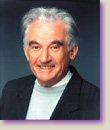
1921 - 2007 Person Name: Lucien Deiss, 1921-2007 Composer of "[Alleluia, alleluia]" in We Celebrate Born: 1921, Paris, France.
Died: October 9, 2007, Île-de-France, France.
Buried: Seminaire des Missions, Chevilly-Larue, Île-de-France, France.
A member of the Holy Spirit Fathers, Deiss attended the Gregorian University in Rome and taught theology at the Grand Scholasticat of Cheville in Paris, France. His works include:
Early Sources of the Liturgy, 1967
It’s the Lord’s Supper/, 1976
Spring Time of the Liturgy, 1979
Sources:
Brink & Polman, P. 313
--www.hymntime.com/tch/
=================
Fr. Deiss was pastor, liturgist, author, international lecturer, renowned Scripture scholar, and an expert on liturgical music. He was selected by Pope Paul VI to coordinate the Lectionary psalter following the Second Vatican Council. His Biblical Hymns and Psalms was the one of the first major collections of liturgical music in the vernacular, and gave us such songs as "All the Earth," "Keep in Mind," and "Grant to Us, O Lord." A tireless advocate of the reforms of Vatican II, Fr. Deiss continually encouraged those who worked in liturgical reform to remain fervent in prayer, and he dedicated much of his life to liturgical catechesis through workshops and writings.
--www.decanimusic.co.uk/
Lucien Deiss
Daniel L. Schutte
b. 1947 Person Name: Dan Schutte Composer of "[Alleluia. Alleluia. Alleluia]" in Breaking Bread (Vol. 39)
Daniel L. Schutte
Iona Community
Composer of "ALLELUIA" in Together in Song Iona Community, an ecumenical Christian group of men and women based on the small island of Iona off the coast of Scotland. The community began in 1938 when the Rev. George MacLeod of the Church of Scotland began a ministry among the unemployed poor who had been neglected by the church. He took a handful of men to the island to rebuild the ruins of a thousand-year-old abbey church. That rebuilding became a metaphor for the rebuilding of the common life, a return to the belief that daily activity is the stuff of godly service – work, and worship. The Community has since grown to include a group of members, associates, and friends all over the United Kingdom and many other countries. In addition to many conferences that attract people to Iona from around the world, the Community is known for its publishing of new songs and prayers for worship, both developed in community and gathered from around the world. For more information on the Iona Community, check their website: www.iona.org.uk. John Bell is probably the community’s most well-known member, having composed and arranged much of the community’s music.
Sing! A New Creation
Iona Community
Michael Joncas
b. 1951 Person Name: J. Michael Joncas Composer of "[Alleluia, alleluia, alleluia, alleluia, alleluia]" in We Celebrate
Michael Joncas
Tony Alonso
b. 1980 Person Name: Tony E. Alonso Author of "Gospel Acclamation (Aclamación antes del Evangelio)" in Oramos Cantando = We Pray In Song Tony Alonso has published several collections of liturgical music and his music appears in many hymnals throughout the world. He has an Bachelor of Music degree from Northwestern University and a M.A. degree in theology from Loyola Marymount University.
Tony Alonso
Bernadette Farrell
b. 1957 Person Name: Bernadette Farrell, b. 1957 Composer of "[Alleluia, alleluia, alleluia, alleluia]" in Journeysongs (2nd ed.)
Bernadette Farrell
Hal H. Hopson
b. 1933 Composer of "[Hallelujah. Hallelujah. Hallelujah]" in Voices United Hal H. Hopson (b. Texas, 1933) is a prolific composer, arranger, clinician, teacher and promoter of congregational song, with more than 1300 published works, especially of hymn and psalm arrangements, choir anthems, and creative ideas for choral and organ music in worship. Born in Texas, with degrees from Baylor University (BA, 1954), and Southern Baptist Seminary (MSM, 1956), he served churches in Nashville, TN, and most recently at Preston Hollow Presbyterian Church in Dallas, Texas. He has served on national boards of the Presbyterian Association of Musicians and the Choristers Guild, and taught numerous workshops at various national conferences. In 2009, a collection of sixty four of his hymn tunes were published in Hymns for Our Time: The Collected Tunes of Hal H. Hopson.
Emily Brink
Hal H. Hopson
Greg Scheer
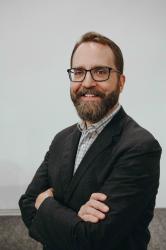
b. 1966 Person Name: Greg Scheer, n. 1966 Arranger of "[Aleluya, alleluya]" in Santo, Santo, Santo Greg Scheer is a composer, author, and speaker. His life’s work includes two sons (Simon and Theo), two books (The Art of Worship, 2006, and Essential Worship, 2016), and hundreds of compositions, songs, and arrangements in a dizzying variety of styles.
Greg is also co-founder of Hymnary.org and source of many ideas and inspirations, some good.
Greg Scheer
Greg Scheer
Cesáreo Gabarain
1936 - 1991 Person Name: Cesáreo Gabaraín, 1936-1991 Composer of "[Aleluya, aleluya]" in Flor y Canto (3rd ed.) Cesáreo Gabaráin, a Spanish priest involved in liturgical renewal following Vatican II.
Bert Polman
Cesáreo Gabarain
Giovanni Pierluigi da Palestrina
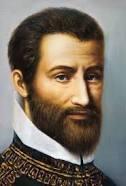
1525 - 1594 Person Name: Giovanni P. da Palestrina Composer of "[Alleluia! Alleluia! Alleluia!]" in Unity Song Selections Giovanni Pierluigi (da Palestrina) Italy 1525-1594. Born at Palestrina, Italy, near Rome, then part of the Papal States to Neopolitan parents. As a youth he became a chorister at the Santa Maria Maggiore basilica in the Rome Diocese. This allowed him to learn literature and music. In 1540 he moved to Rome, where he studied in the school ofr the Hugenot, Claude Goudimel. He also studied with Robin Mallapert and Firmin Lebel. Orlando Di Lasso was also a musical advisor to him. From 1544-1551 he was organist at the Cathedral of St Agapito, the principle church of his native city. In 1547 he married Lucrezia Gori, and they had four children: Rodolfo, Angelo, Iginio, and a daughter. In 1551 Pope Julius III (previously Bishop of Palestrina) appointed him ‘maestro di cappella’, or musical director of the Cappella Giulia (choir). Pierluigi dedicated his first published compositions to Pope Julius III (1554), known as ‘the book of Masses’. It was the first book of masses by a native composer, since most sacred works in those days were from low countries (France or Spain). In 1555 Pope Paul IV ordered that all papal choristers should be clerical. As Pierluigi married early in life and had four children, he was unable to continue in the chapel as a layman. During the next decade he held positions similar to his Julian Chapel appointment at other chapels and churches in Rome, including St John Lateran (1555-1560), and Santa Maria Maggiore (1561-1566). In 1571 he returned to the Julian Chapel and remained at St Peter’s for the rest of his life. The 1570s was a decade of difficulty for him, as he lost his brother, two sons, and his wife in three separate outbreaks of plague (1572-1575-1580). In 1578 he was given the title of ‘Master of Music’ at the Vatican Basilica. He thought of becoming a priest at this time, but instead married a wealthy widow, Virginia Formoli, in 1581, widow of a wealthy merchant, which gave him financial independence (he was not well-paid as choirmaster). He spent considerable time administering to her fortune, but also was able to compose prolifically until his death. He also helped to found an association of professional musicians called the Vertuosa Compagnia dei Musici. He died in Rome of pleurisy. He left hundreds of compositions, including 1045 masses, 68 offertories, 140 madrigals, 300+ motets, 72 hymns, 35 magnificats, 11 litanies and several sets of lamentations. There are two comprehensive editions of his works: a 33-volume edition published by Breitkopf and Hartel, in Leigzig, Germany, between 1862-1894, edited by Franz Xaver Habert, and a 34-volume edition published in the mid 20th century by Fratelli Scalera, in Rome, Italy, edited by R Casimiri and others. As a Renaissance musician and composer of sacred music he was the best known 16th century representative of the Roman School of musical composition. He had a long-lasting influence on the development of church and secular music in Europe, especially on the development of counterpoint, his work considered the culmination of Renaissance polyphony. Very famous in his day, he was considered by some the legendary ‘savior of church music’. A 2009 film was produced by German television about him, titled: ‘Palestrina – Prince of Music’.
John Perry
Giovanni Pierluigi da Palestrina
Fintan O'Carroll
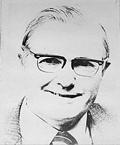
1922 - 1981 Person Name: Fintan O'Carroll, 1922-1981 Composer of "[Alleluia, alleluia. Alleluia, alleluia]" in We Celebrate Fintan O’Carroll was born on 31st July 1922 in Wexford, and spent most of his life in Waterford. On completion of his secondary school studies Fintan took up a position as a Clerk in C.I.E., the national railway.
He won first prize in a traditional music competition, aged 12, playing violin, and went on to study violin at home, taking lessons as and when the opportunity arose. While working at C.I.E. Fintan undertook a correspondence course in Music from Trinity College, Dublin. His heart was in music, and he left C.I.E. in 1967 after 27 years service, whereupon he completed his degree at Trinity to gain his B.Mus. along with the Prout Prize for the most outstanding student of the year. All the time Fintan had taken a keen interest in composition, particularly sacred music. Fintan became a fulltime teacher at the Presentation Convent Secondary School in Waterford, a job which payed about half the salary in C.I.E. at the time. He supplemented his income by taking 52 private pupils, conducting 2 brass bands, and led the orchestra in every musical show that offered.
Some of the many musical organizations that owe a debt of musical gratitude to Fintan, whether it be as leader, violinist, conductor, organist, composer, or founder include Waterford Orchestral Players; Waterford Festival of Light Opera Orchestra; St Saviours Church, Bridge Street; the Franciscan Friary; the Church of SS Josephs and Benildus; St Patrick’s; Waterford Cathedral; St Patrick’s Brass Band; HFC Brass Band, New Ross; Mount Sion Silver Band. It is particularly with the brass bands that we are interested and it is fair to say that Fintan brought a sense of musicality and musicianship to these bands which helped greatly in the development of their players and the achievement of competition successes at all levels. Many musicians have commented later in their life that it was the love of music instilled in them by Fintan that carried them through their own musical lives.
One of the proudest moments of Fintan’s musical career must have been when his Mass of the Immaculate Conception was chosen for the occasion of the visit of Pope John Paul II to Limerick in 1979. He took part in the Offertory Procession on this momentous occasion.
Fintan died in July 1981 and was survived by his wife Josephine, a fine contralto voice, and whom he credits with much of his own success. They had six children: Fiona, Deirdre, Fergus, Declan, Kevin, Aoileann, and Cian, many of which play a very active role in the musical life of Waterford and beyond.
--www.mountsionsilverband.org/history/
Fintan O'Carroll
Jerry Sinclair
1943 - 1993 Composer of "[Alleluia, alleluia, alleluia, alleluia]" in Worship (3rd ed.)
Jerry Sinclair
Howard Hughes
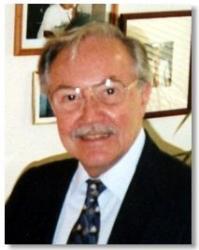
b. 1930 Person Name: Howard Hughes, SM Composer of "[Alleluia]" in Worship (3rd ed.) In his letter of invitation to Brother Howard Hughes, the President of NPM, J. Michael McMahon, declared, “Board Members agreed unanimously that you have created compositions for the liturgy that are beautiful, delightful, and spirited, and that have fostered strong participation by the worshiping assembly as they pray the texts you have set to music.”
The Marianist composer’s first published work was “Mass for Peace” which appeared in Peoples Mass Book, 1964 edition, released by World Library Publications. As liturgical celebration developed in the English vernacular following the Second Vatican Council, Brother Howard produced a wide range of liturgical compositions published by WLP, GIA, ICEL, OCP, LTP, CFCW, FDLC, USCC, RP, NPM, Presbyterian Church USA, and The United Methodist Hymnal Companion. And at the age of 81 he is still composing and accepting commissions for special events.
A Marianist religious for 64 years, this distinguished liturgical musician and composer began as a high teacher of French and director of high school choral groups. In addition Brother Howard also sang in symphonic choruses in New York and in Baltimore. He commented that “conducting high school choral concerts and singing with adult symphonic choruses have been a great help in learning to write music.”
The National Association of Pastoral Musicians will honor Brother Howard Hughes, S.M., as Pastoral Musician of the Year when it gathers for its national convention in Washington, DC, July 29 – August 2, 2012.
Currently the awardee serves as organist and music director for the Marianist Center in Cupertino, CA.
--http://www.dsj.org/being-catholic/worship
Howard Hughes
Henry Purcell

1659 - 1695 Composer of "[Hallelujah, Hallelujah]" in The United Methodist Hymnal Music Supplement II Henry Purcell (b. Westminster, London, England, 1659; d. Westminster, 1695), was perhaps the greatest English composer who ever lived, though he only lived to the age of thirty-six. Purcell's first piece was published at age eight when he was also a chorister in the Chapel Royal. When his voice changed in 1673, he was appointed assistant to John Hingston, who built chamber organs and maintained the king's instruments. In 1674 Purcell began tuning the Westminster Abbey organ and was paid to copy organ music. Given the position of composer for the violins in 1677, he also became organist at Westminster Abbey in 1679 (at age twenty) and succeeded Hingston as maintainer of the king's instruments (1683). Purcell composed music for the theater (Dido and Aeneas, c. 1689) and for keyboards, provided music for royal coronations and other ceremonies, and wrote a substantial body of church music, including eighteen full anthems and fifty-six verse anthems.
Bert Polman
Henry Purcell
Dmitri Stepanovich Bortnianski

1751 - 1825 Person Name: Dmitrij Štěpanwiç Bortnjanskij, d. 1825 Composer of "ALLELUJA" in Śpiewnik Ewangelicki Dimitri Stepanovitch Bortniansky (1751-1825) Ukraine 1751-1825
Born in Glukhov, Ukraine, he joined the imperial choir at age 8 and studied with Galuppi, who later took the lad with him to Italy, where he studied for 10 years, becoming a composer, harpsichordist, and conductor. While in Italy he composed several operas and other instrumental music, composing more operas and music later in Russia. In 1779 he returned to Russia, where he was appointed Director to the Imperial Chapel Choir, the first as a native citizen. In 1796 he was appointed music director. With such a great instrument at his disposal, he produced many compositions, 100+ religious works, sacred concertos, cantatas, and hymns. He influenced Rachmaninoff and Tchaikovshy, the latter editing Bortniansky's sacred work, amassing 10 volumnes. He died in St. Petersburg. He was so popular in Russia that a bronze statue was erected in his honor in the Novgorod Kremlin. He composed in different musical styles, including choral works in French, Italian, Latin, German, and Church Slavonic.
John Perry
Dmitri Stepanovich Bortnianski
George Black
1931 - 2003 Person Name: George Black, 1931- Composer (psalm tone) of "[Alleluia]" in Common Praise (1998)
George Black
Henry G. Ley
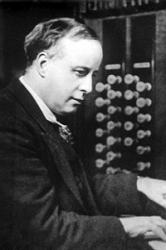
1887 - 1962 Person Name: Henry George Ley, 1887-1962 Harmonizer of "VULPIUS (GELOBT SEI GOTT)" in Singing the Faith Born: December 30, 1887, Chagford, Devonshire, England.
Died: August 24, 1962, near Ottery, Devonshire, England.
Ley trained as a chorister at St. George’s Chapel, Windsor, as a music scholar at Uppingham, the Royal College of Music, and as an organ scholar at Keble College, Oxford. He was Precentor of Radley College; organist at Christ Church Cathedral, Oxford (1909-26); Choragus of the University, Oxford; professor of the organ at the Royal College of Music (1919); and organist at Eton College.
Sources:
Frost, p. 680
West, p. 87
http://www.hymntime.com/tch/bio/l/e/y/ley_hg.htm
Henry G. Ley
Ronald F. Krisman
Composer of "[Alleluia, alleluia, alleluia]" in Gather (3rd ed.)
Ronald F. Krisman
L. Lambillotte
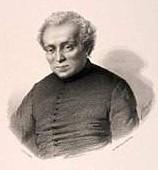
1796 - 1855 Person Name: Louis Lambillotte, SJ, 1796-1855 Composer of "[Alleluia, alleluia, alleluia, alleluia]" in Oramos Cantando = We Pray In Song
L. Lambillotte
Andrew Moore
Arranger of "[Alleluia, alleluia, alleluia, alleluia]" in Complete Anglican Hymns Old and New
Andrew Moore
Damian Lundy
Person Name: Damian Lundy, 1944-1997 Author (vs. 5-7) of "Alleluia (x8)" in Complete Anglican Hymns Old and New
Damian Lundy
Norah Duncan
Person Name: Norah Duncan IV Composer of "[Alleluia! Alleluia]" in More Voices
Norah Duncan
Robert J. Batastini
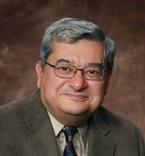
b. 1942 Composer (tune 3) of "[Alleluia (1) / Praise to you (2) / I am the light (3)]" in Lead Me, Guide Me (2nd ed.) Robert J. Batastini is the retired vice president and senior editor of GIA Publications, Inc., Chicago. Bob has over fifty-five years of service in pastoral music ministry, having served several parishes in the Archdiocese of Chicago and one in the Diocese of Joliet. He served as executive editor and project director for the Worship hymnals (three editions), Gather hymnals (three editions), Catholic Community Hymnal, and as executive editor of RitualSong.
In 1993 he became the first recipient of the Father Lawrence Heimann Citation for lifetime contribution to church music and liturgy in the U.S., awarded by St. Joseph's College, Rensselaer, Indiana, and was named "Pastoral Musician of the Year-2000" by the National Association of Pastoral Musicians (NPM). At its 2006 conference, he was named a Fellow of the Hymn society in the United States and Canada.
In his retirement he is active in the music ministry of St. Francis de Sales Parish, Holland, MI.
Nancy Naber, from www.giamusic.com/bios/
Robert J. Batastini
Ricky Manalo
Person Name: Ricky Manalo, CSP Composer of "[Alleluia. Alleluia. Alleluia]" in Breaking Bread (Vol. 39)
Ricky Manalo
Jan Vermulst
Person Name: Jan M. Vermulst, 1925-1994 Composer of "[Alleluia, alleluia, alleluia]" in One in Faith
Jan Vermulst
Peter Stevens
b. 1987 Person Name: Peter Stevens (b. 1987) Harmonizer (alleluias) of "[Alleluia, alleluia, alleluia]" in Ancient and Modern
Peter Stevens
Peter M. Kolar
b. 1973 Composer of "[Alleluia, alleluia, alleluia, alleluia]" in We Celebrate
Peter M. Kolar


 My Starred Hymns
My Starred Hymns



